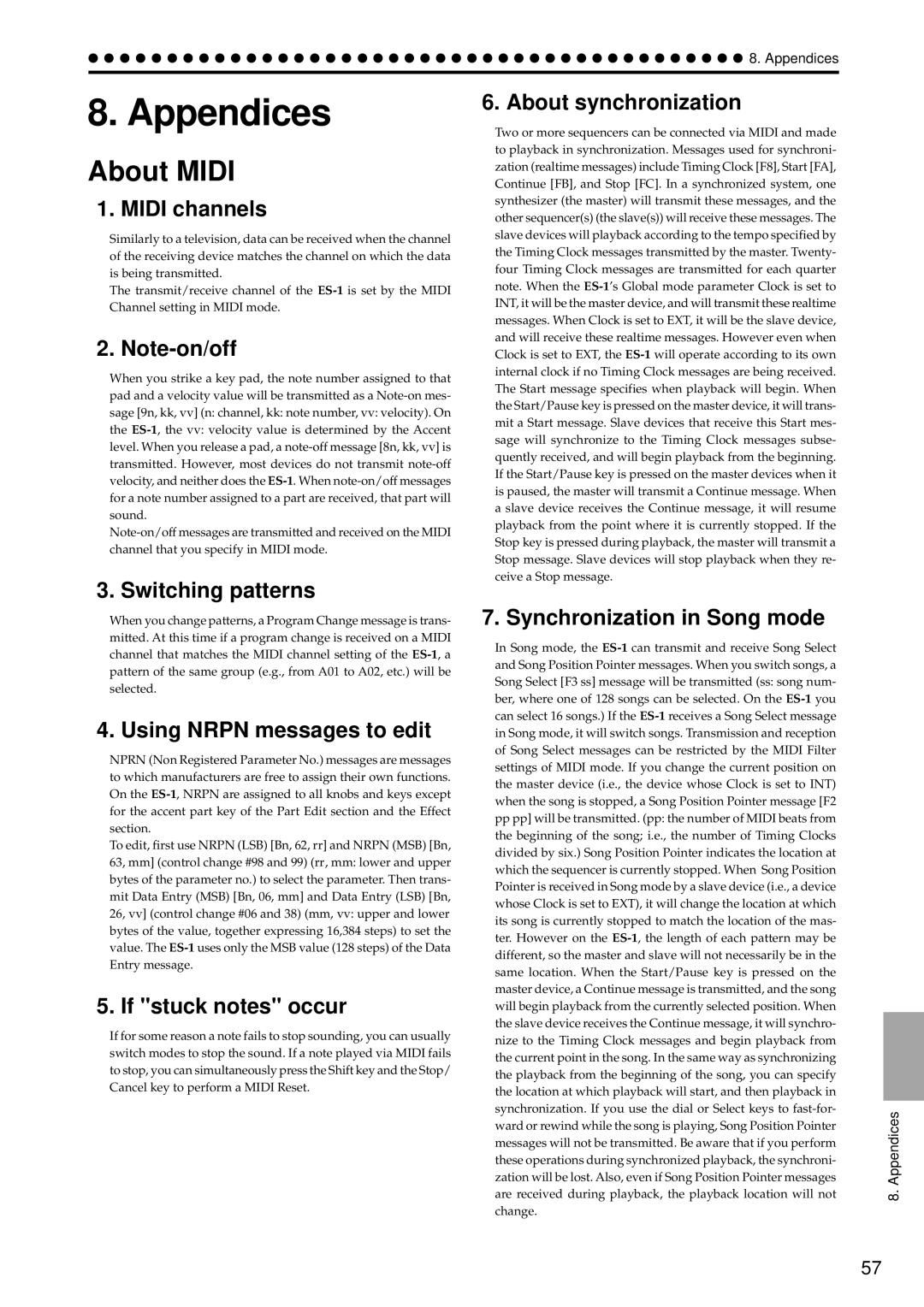
8. Appendices
8. Appendices
About MIDI
1. MIDI channels
Similarly to a television, data can be received when the channel of the receiving device matches the channel on which the data is being transmitted.
The transmit/receive channel of the
2.
When you strike a key pad, the note number assigned to that pad and a velocity value will be transmitted as a
3. Switching patterns
When you change patterns, a Program Change message is trans- mitted. At this time if a program change is received on a MIDI channel that matches the MIDI channel setting of the
4. Using NRPN messages to edit
NPRN (Non Registered Parameter No.) messages are messages to which manufacturers are free to assign their own functions. On the
To edit, first use NRPN (LSB) [Bn, 62, rr] and NRPN (MSB) [Bn, 63, mm] (control change #98 and 99) (rr, mm: lower and upper bytes of the parameter no.) to select the parameter. Then trans- mit Data Entry (MSB) [Bn, 06, mm] and Data Entry (LSB) [Bn, 26, vv] (control change #06 and 38) (mm, vv: upper and lower bytes of the value, together expressing 16,384 steps) to set the value. The
5. If "stuck notes" occur
If for some reason a note fails to stop sounding, you can usually switch modes to stop the sound. If a note played via MIDI fails to stop, you can simultaneously press the Shift key and the Stop/ Cancel key to perform a MIDI Reset.
6. About synchronization
Two or more sequencers can be connected via MIDI and made to playback in synchronization. Messages used for synchroni- zation (realtime messages) include Timing Clock [F8], Start [FA], Continue [FB], and Stop [FC]. In a synchronized system, one synthesizer (the master) will transmit these messages, and the other sequencer(s) (the slave(s)) will receive these messages. The slave devices will playback according to the tempo specified by the Timing Clock messages transmitted by the master. Twenty- four Timing Clock messages are transmitted for each quarter note. When the
7. Synchronization in Song mode
In Song mode, the
pppp] will be transmitted. (pp: the number of MIDI beats from the beginning of the song; i.e., the number of Timing Clocks divided by six.) Song Position Pointer indicates the location at which the sequencer is currently stopped. When Song Position Pointer is received in Song mode by a slave device (i.e., a device whose Clock is set to EXT), it will change the location at which its song is currently stopped to match the location of the mas- ter. However on the
8. Appendices
57
